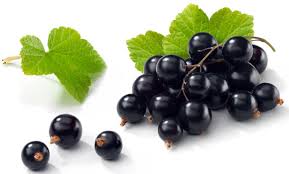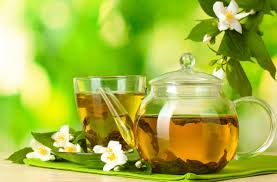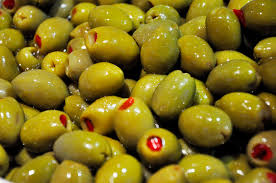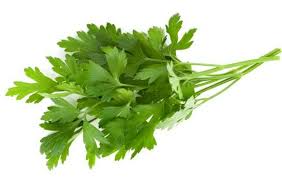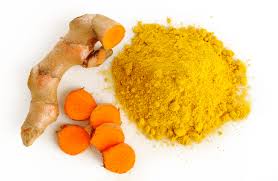Scientists observed that Sirtuins food or sirtfoods have enormous health benefits. These foods increase longevity and quality of life. Recent research demonstrated that caloric restriction along with “sirtfoods” is the elixir of long life. Researchers are in search of sirtuin activator supplements. However, there are many natural foods, which can naturally and easily activate the sirtuins. In this article, we discussed top ten natural sirtuns activating foods.
What is Sirtuin?
Sirtuins are known as housekeeping genes. Sirtuins are a family of age related proteins. Sirtuins regulate numerous cellular and organismal functions, including metabolism, cellular death, inflammation, and longevity. The main role of sirtuins is to selectively regulate the activity of many key genes responsible for metabolism, cell defense, reproduction and other functions. Sirtuins (SIRT1) also modulates brain plasticity and memory formation functions. Scientist observed that Sirtuins (SIRT6) regulates the telomere length.
What are “sirtfoods” ?
Foods that contain high levels of SIRTUIN activators are known as ‘sirtfoods’. Sirtfoods include kale, olives, green tea, fish oil, onions, cocoa, blackcurrants, turmeric, citrus fruits, miso soup, capers, parsley, tofu and other soy products, extra-virgin olive oil and apples. The top ten sirtuin foods are blackcurrants, green tea, dark chocolate, kale, olives, capers, parsley, onions, turmeric, omega-3 fish oil.
1. Blackcurrants
The berry is particularly rich in a type of anti-oxidant called anthocyanins, which has been proven to help reduce the risk of heart attacks, stroke and heart failure as well as helping against diabetes. The most intensely colored and flavored of all currants are blackcurrants.
2. Green Tea
Green tea tea is now the world’s most widely consumed beverage after water. Green tea contains B vitamins, folate (naturally occurring folic acid), manganese, potassium, magnesium, caffeine and other antioxidants (notably catechins). Green tea is alleged to boost weight loss, reduce cholesterol, combat cardiovascular disease, and prevent Alzheimer’s disease. Two to three cups of green tea per day is good for health.
3. Dark Chocolate
To stay healthy you can stick on to healthy chocolate with at least 70 percent cacao (or cocoa, which is cacao in its roasted, ground form). Eating dark chocolate every day has proven health benefits, such as decreasing the risk of high blood pressure and heart disease. As long as the content is that high, you can reap the benefits from eating only small amounts. Because of its high fat and sugar content, limit yourself to about three dark chocolate bars, a week.
4. Kale or Borecole
Kale or borecole is a vegetable with green or purple leaves, in which the central leaves do not form a head. Kale is rich in numerous health benefiting polyphenolic flavonoid compounds such as lutein, zea-xanthin, and beta-carotene, and vitamins than found in any other green leafy vegetables.
5. Olives and Extra-Virgin Olive Oil
Olives are one of the world’s most widely enjoyed foods. Olives eliminate excess cholesterol in the blood. Olives control blood pressure. Olives are a source of dietary fibre as an alternative to fruits and vegetables. Olives are nutritious and rich in mineral content as sodium, potassium, magnesium, iron, phosphorus and iodine. Olives provide essential vitamins and amino acids.
6. Parsley
Parsley is the world’s most popular herb. It’s leaves contains zero cholesterol and fat, but rich in anti-oxidants, vitamins, minerals, and dietary fiber. Parsley contains two types of unusual components that provide unique health benefits. The first type is volatile oil components—including myristicin, limonene, eugenol, and alpha-thujene. The second type is flavonoids—including apiin, apigenin, crisoeriol, and luteolin. It is, perhaps, the richest herbal source for vitamin K. Vitamin K has been found to have the potential role in bone health by promoting osteotrophic activity in the bones.
7. Capers
Capers are the small flower buds of the Capparis shrub. The buds, when ready to pick, are a dark olive green and about the size of a fresh kernel of corn. Capers are preserved a number of ways – either in salt, wine vinegar, brine or olive oil. They are picked, then pickled in salt, or a salt and vinegar solution, and drained. Intense flavor is developed as mustard oil is released from each caper bud. Capers are one of the plant sources high in flavonoid compounds rutin (or rutoside) and quercetin. Rutin strengthen capillaries and inhibits platelet clump formation in the blood vessels. The spicy buds contain healthy levels of vitamins such as vitamin A, vitamin K, niacin, and riboflavin.
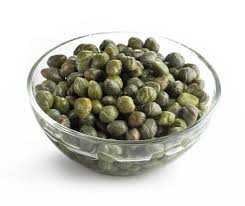
8. Onions
For centuries, onions have been used to reduce inflammation and heal infections. Onions contain chromium, which assists in regulating blood sugar. The total polyphenol content of onion is not only higher than its fellow vegetables, garlic and leeks, but also higher than tomatoes, carrots, and red bell pepper. Onion is much more active in its raw state than when cooked. It contains a variety of organic sulphur compounds, contained in a volatile oil, that provide the health benefits. Raw red onions are the best for Sirtuin activation.

9. Turmeric
Curcumin is the main active ingredient in turmeric. It has powerful anti-inflammatory effects and is a very strong antioxidant. Turmeric is used for arthritis, heartburn (dyspepsia), stomach pain, diarrhea, intestinal gas, stomachbloating, loss of appetite, jaundice, liver problems and gallbladder disorders. Other uses include depression, Alzheimer’s disease, water retention, worms, and kidney problems.
10. Omega-3 Fish Oil
Fish oil can be obtained from eating fish. The benefit of fish oil seems to come from the omega-3 fatty acids. Fish that are especially rich in the beneficial oils known as omega-3 fatty acids include salmon, tuna, sturgeon, mullet, bluefish, and sardines.
Types of Sirtuin Activators:
There are two types of sirtuin activators; natural sirtuin activators and artificial or drug oriented sirtuin activators. Studies on sirtuins show that artificial sirtuin activators increase anxiety. They observe that mice with very high sirtuin levels spent much more time closer to the walls, means they were more anxious. Researchers are focusing on developing sirtuin drugs to treat diseases, but it has a long way to go. On the other side, natural sirtuin foods are very effective for overall health. These natural foods are time tested. They are in use for thousands of years. Resveratrol is a sirtuin food. Resveratrol occurs naturally in several plants, mostly on the skins of red grapes.
Summary of Natural Sirtuin Foods:
Aging is a complex process, lifestyle and proper natural food is the best way to enhance the quality of life. We have discussed here top ten natural sirtuin foods. These top ten sirtuin foods are blackcurrants, green tea, dark chocolate, kale, olives, capers, parsley, onions, turmeric, omega-3 fish oil.
